#christoph girardet
Photo




🌈 Day 6, Sunday 21 August 🌱 Last day today! We can‘t wait to meet you at the HKW for the last day of this 2022 Berlin edition 🔥 Join us from 12:00 CET for the "Data dream" exhibition, followed by 2 thematic screenings, and finally the closing screening at 19:00 CET 🌟 ⚡ 12:00 CET: "Data dream" exhibition, in the presence of Soren Thilo Funder ⚡ 15:00 CET: Unknown call, in the presence of Karolina Bregula, Ella Raidel, Zhouanqi Liu, Ahmed Elghoneimy, Ghyzlène Boukaila, Wouter Stroet and Luca Ferri ⚡ 17:00 CET: The absentees, in the presence of Lina Filipovich and Eleonore De Montesquiou ⚡ 19:00 CET: Closing screening, "The clear object of desire", in the presence Markus Hanakam, Roswitha Schuller, Julian Rabus and Assaf Gruber Detailed programme: https://www.art-action.org/prog If you are not in Berlin, watch the livestream from 15:00 CET: https://art-action.org/live Images: Brad Todd, ‘‘3050 K‘‘ | Zhouanqi Liu, ‘‘A Walk In Spring‘‘ | Christoph Girardet, Matthias Müller, ‘‘Misty Picture‘‘ | Markus Hanakam, Roswitha Schuller, ‘‘The Moist Cabinet‘‘ #ripb2022 #newcinema #contemporaryart #HKW #video #multimedia #screening #artworks #experimental #art #cinema
0 notes
Photo

Christoph Girardet & Matthias Müller, {2006} Hide
#film#christoph girardet#matthias müller#hide#2006#experimental film#found footage#short film#male filmmakers#decayed film#colour#2000s#germany#close-up
239 notes
·
View notes
Photo

Christoph Girardet & Matthias Müller, Everything Not Said (workprints), 2014. Courtesy Campagne Première Berlin. © Christoph Girardet & Matthias Müller.
Christoph Girardet (b. 1966) and Matthias Müller (b. 1961) both work autonomously across film, video art and photography. Whereas Christoph Girardet mostly uses visually reduced materials in his work, which acquire new levels of meaning through intensive processing, Matthias Müller frequently traces new and autobiographical themes, using both his own and foreign materials. Since 1999, the two artists have been building up a joint body of work, whose focus revolves around found footage. For the first time at Campagne Première, their recent cinematographic and photographic work will be presented in a joint exhibition.
Their video loop Cut (2013) ties the phantasmagorical idea of the fully transparent, controllable and infinitely malleable body to the notion of corporeality as a wound that can never heal. The work uses images from movies that idealise the human body as practically indestructible and highly mutable as well as being the cause of pain, anxiety, hysteria and delusion.
The concept of the body that can be formed and disciplined is juxtaposed with a physique that is fragile and vulnerable to danger, one that terrifies, ages and dies.
The dual slide-projection Everything Not Said (2014) also traces the boundaries between the body’s interior and exterior. A large collection of single frames showing bandaged heads was compiled from movies, newly arranged and paired with extracts from psychiatric health questionnaires. Caught between transparency and opacity; vulnerability and one’s armour against it; individuality and anonymity, the faces condense into a panopticon of voyeurs under observation.
https://www.art-agenda.com/announcements/186272/christoph-girardet-amp-matthias-mllercut
27 notes
·
View notes
Link
The brisk simplicity with which Hitchcock handles this moment of death was challenged by the artist Douglas Gordon in one of his most famous installations. His 24 Hour Psycho (1993) slowed the entire film down so it would be played over an entire day, a provocative twist on the original film’s manipulation of the audience. Don DeLillo, no stranger to using visual art in his narratives, placed the watching of Gordon’s video at the beginning of his 2010 novel Point Omega; New Yorkers will have a chance to see it themselves on November 17, when Gagosian hosts a 24-hour screening at their 21st Street location.
#photography#christoph girardet & matthias müller#douglas gordon#gus van sant#pierre huyghe#Gordon#Douglas#Artsy#Psycho#Alfred Hitchcock#Hitchcock#art#artist#24 Hour Psycho#Craig Hubert#Gagosian#Gagosian West 21st Street#Gagosian Gallery#Larry Gagosian
10 notes
·
View notes
Text
Archiveology
Composed of the films mentioned in Catherine Rusell's book Archiveology, this list could be a useful guide for discovering found-footage filmmaking practices.
-Paris 1900
1947 · DIRECTED BY Nicole Védrès
-Berlin: Symphony of a Great City
Berlin: Die Sinfonie der Großstadt
1927 · DIRECTED BY Walter Ruttmann
-Man with a Movie Camera
Человек с киноаппаратом
1929 · DIRECTED BY Dziga Vertov
-Histoire(s) du cinéma
1998 · DIRECTED BY Jean-Luc Godard
-Film Is.
Film ist.
1998 · DIRECTED BY Gustav Deutsch
-Film Is. 7-12
Film ist. 7-12
2002 · DIRECTED BY Gustav Deutsch
-Los Angeles Plays Itself
2003 · DIRECTED BY Thom Andersen
-Of Time and the City
2008 · DIRECTED BY Terence Davies
-My Winnipeg
2007 · DIRECTED BY Guy Maddin
-Decasia
2002 · DIRECTED BY Bill Morrison
-The Clock
2010 · DIRECTED BY Christian Marclay
-Rose Hobart
1936 · DIRECTED BY Joseph Cornell
-Phoenix Tapes
1999 · DIRECTED BY Matthias Müller, Christoph Girardet
-Home Stories
1990 · DIRECTED BY Matthias Müller
-Kristall
2006 · DIRECTED BY
Matthias Müller, Christoph Girardet
1 note
·
View note
Link
By Denise Lu and Christopher Flavelle | Oct. 29, 2019
The authors of a paper published Tuesday developed a more accurate way of calculating land elevation based on satellite readings, a standard way of estimating the effects of sea level rise over large areas, and found that the previous numbers were far too optimistic. The new research shows that some 150 million people are now living on land that will be below the high-tide line by midcentury.
Southern Vietnam could all but disappear.
The first map shows earlier expectations of submerged land by 2050. But the new outlook, the second map, indicates that the bottom part of the country will be underwater at high tide.
More than 20 million people in Vietnam, almost one-quarter of the population, live on land that will be inundated.
Much of Ho Chi Minh City, the nation’s economic center, would disappear with it, according to the research, which was produced by Climate Central, a science organization based in New Jersey, and published in the journal Nature Communications. The projections don’t account for future population growth or land lost to coastal erosion.
Standard elevation measurements using satellites struggle to differentiate the true ground level from the tops of trees or buildings, said Scott A. Kulp, a researcher at Climate Central and one of the paper’s authors. So he and Benjamin Strauss, Climate Central’s chief executive, used artificial intelligence to determine the error rate and correct for it.
In Thailand, more than 10 percent of citizens now live on land that is likely to be inundated by 2050, compared with just 1 percent according to the earlier technique. The political and commercial capital, Bangkok, is particularly imperiled.
Climate change will put pressure on cities in multiple ways, said Loretta Hieber Girardet, a Bangkok resident and United Nations disaster risk-reduction official. Even as global warming floods more places, it will also push poor farmers off the land to seek work in cities.
“It is a dire formula,” she said.
In Shanghai, one of Asia’s most important economic engines, water threatens to consume the heart of the city and many other cities around it.
The findings don’t have to spell the end of those areas. The new data shows that 110 million people already live in places that are below the high tide line, which Mr. Strauss attributes to protective measures like seawalls and other barriers. Cities must invest vastly greater sums in such defenses, Mr. Strauss said, and they must do it quickly.
But even if that investment happens, defensive measures can go only so far. Mr. Strauss offered the example of New Orleans, a city below sea level that was devastated in 2005 when its extensive levees and other protections failed during Hurricane Katrina. “How deep a bowl do we want to live in”? he asked.
The new projections suggest that much of Mumbai, India’s financial capital and one of the largest cities in the world, is at risk of being wiped out. Built on what was once a series of islands, the city’s historic downtown core is particularly vulnerable.
Over all, the research shows that countries should start preparing now for more citizens to relocate internally, according to Dina Ionesco of the International Organization for Migration, an intergovernmental group that coordinates action on migrants and development.
“We’ve been trying to ring the alarm bells,” Ms. Ionesco said. “We know that it’s coming.” There is little modern precedent for this scale of population movement, she added.
The disappearance of cultural heritage could bring its own kind of devastation. Alexandria, Egypt, founded by Alexander the Great around 330 B.C., could be lost to rising waters.
In other places, the migration caused by rising seas could trigger or exacerbate regional conflicts.
Basra, the second-largest city in Iraq, could be mostly underwater by 2050. If that happens, the effects could be felt well beyond Iraq’s borders, according to John Castellaw, a retired Marine Corps lieutenant general who was chief of staff for United States Central Command during the Iraq War.
Further loss of land to rising waters there “threatens to drive further social and political instability in the region, which could reignite armed conflict and increase the likelihood of terrorism,” said General Castellaw, who is now on the advisory board of the Center for Climate and Security, a research and advocacy group in Washington.
“So this is far more than an environmental problem,” he said. “It’s a humanitarian, security and possibly military problem too.”
88 notes
·
View notes
Text
Continuando de onde paramos - Mostra Internacional 32º Kinoforum
O curta-metragem sempre foi um formato permissivo à própria reinvenção e adaptável aos diferentes contextos criativos. Ao acompanhar a Mostra Internacional do 32° Curta Kinoforum, composta por 38 filmes e 8 sessões, pode-se dizer que às limitações impostas pela pandemia se mostraram um ponto de partida para a invenção de muitos dos filmes, mas não podemos esquecer que esse desejo de mudança vai muito além disso.
Existe alguma "maturação" de certos temas que as cinematografias apresentaram nos últimos anos - por mais que não se proponha exatamente a fazer um panorama da produção de curtas-metragens pelo mundo nos últimos dois anos, podemos dizer a mostra nos traz um recorte interessante e bem diverso da produção mundial de curtas nesse período, construída a partir de alguns temas-chave.
Este texto não é nenhuma cahiersducinematização (não entenda mal), não foi escrito para vender nenhum cinema como "revolucionário", ou afirmar que as coisas serão diferentes depois de qualquer filme em particular. Acontece que, diante da cada vez mais crescente necessidade de dizer o óbvio, talvez seja interessante pensar em como alguns filmes conseguem fazê-lo com certa desenvoltura, mas sem perder a chance de avançar em certos debates.
Nessa leva de filmes, realizados entre 2020 e 2021, de alguma forma, o lugar comum do progressismo social democrata nas representações não se descola mais do pensamento neoliberal protofascista que começou a ser sistematicamente difundido pelos mercados após a crise de 2008 - de repente essa ideia tão prepotente que tínhamos, de que conseguiríamos traçar com uma linha que nos apontaria "onde foi que tudo começou a dar errado", passa a soar tremendamente ingênua e pedante.
Um filme que nos ajuda a compreender para compreender essa noção é "Estrela Vermelha" (Yohan Manca. França, 2020), que conta a história de um homem que dedica o seu tempo ao trabalho voluntário junto ao clube de futebol de seu bairro, e que vê a sua vida ruir após perder o emprego e ter seu apelo à seguridade social negado por falta do registro de algumas horas trabalhadas. Note que aqui o vilão não é o autoritarismo explicito, e nem o infortúnio repentino do vírus, mas a mentalidade liberal progressista comum, a "social democracia keynesiana", o welfare system - essa média desmedida e desequilibrada que se vende como "sensata" em meio à polarização, é ela quem deixa a porta da tirania aberta.
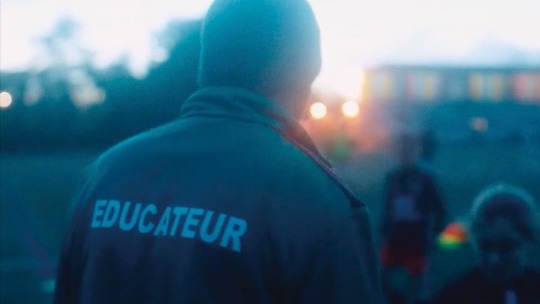
A visão do começo dos anos 2000 como uma época de avanços e esperança parece nunca ter existido em "Fantasia do Desastre" (Christoph Girardet, Matthias Müller. Alemanha, 2021), filme que explora, de forma provocante, imagens das torres gêmeas produzidas por Hollywood, muitas delas fazendo algum tipo de alusão premonitória à tragédia do 11 de setembro - são travellings que atravessam pelo meio dos dois prédios, imagens e mais imagens de aviões sobrevoando áreas próximas (certamente produzidas para ressaltar a altura dos monumentos).
A animação "A arte está no sangue" (Joanna Quinn. Reino Unido, 2021) parece nos alertar, com muito bom humor, sobre como acabamos aceitando que nossas obsessões tornem-se definidoras de quem somos, e, ao narrar em primeira pessoa as peripécias de uma família de obsessivos, a realizadora toca em diversos temas como a solidão, as disfunções familiares e o próprio processo criativo. No filme "Do.Solo.Pin" (Javad Atefeh. Estados Unidos, 2021) Shahla, uma cuidadora de idosos, precisa implorar pelo seu salário como quem pede por um favor, e recebe a resposta afirmativa e preguiçosa da patroa como uma dádiva. Além da rotina exaustiva, ela ainda precisa fazer videochamadas para provar para a patroa que realmente está trabalhando.
Em "Cicatrizes" (Alex Anna. Canadá, França, 2020) e "Irmãs" (Katarina Rešek. Eslovênia, 2020) temos histórias de personagens tentando recobrar o controle sobre o próprio corpo, que também podem ser percebidas como relatos de solidão e "isolamento social" (não esse causado pela pandemia). No primeiro, Alex luta contra o desejo de automutilação, uma forma de "materializar" a dor que sente e criar um mapa temporal em seu corpo. A sensação de solidão e o medo da não compreensão das outras pessoas acaba por colocá-la em um vórtex onde ela não sabe mais se provoca os cortes para aliviar a tristeza, ou se na verdade sente-se triste por causa de suas cicatrizes. Já no segundo, vemos três garotas que se entregam ao combate físico como resposta à violência imposta pelos garotos do bairro - como se tomassem a iniciativa de escolher a violência antes de serem surpreendidas por esta - elas lutam por si mesmas, por outras garotas, e encontram na relação com uma personagem transexual, inicialmente vista com desconfiança e estranheza, uma conexão que finalmente afaga suas ansiedades e parece oferecer algum afeto em meio a um contexto tão conflituoso.
Em "Fim do Sofrimento (Uma Proposta)" (Jacqueline Lentzou, 2020), Sofia ouve uma voz informá-la de que ela na verdade vem de Marte, e que, assim como ela, existem muitos outros marcianos na terra perdidos, alguns deles seus amigos. Marte é um lugar onde não existe tempo, nem ansiedade; ou pelo menos é isso que a voz nos diz, além de nos fazer notar essa estranha obsessão dos seres humanos em buscar em tudo um "sentido" e finalidade - ao som de Hiroshi Yoshimura.
Na animação "Escondido" (Daniel Gray, 2020), ao brincar de esconde-esconde com seu irmão, um garoto acaba passando a vida inteira dentro de um armário. Esquecido pela família, ele observa pela fresta da porta a vida do irmão acontecer. A questão do esquecimento e da memória das pessoas esquecidas também é trazida por "Eventos Para Serem Esquecidos" (Marko Tadic, 2020), animação inspirada no poema de Hans Magnus Enzensberger "Die Verschwundenen/Os Desaparecidos".
"Não foi a terra que os engoliu, foi o ar"
"O Frango" (Neo Sora, 2020) nos mostra um passado e um presente que se confrontam na medida em que a trama se materializa. Oriente e ocidente se misturam, e a morte do frango dá lugar ao nascimento da criança. Enquanto em "Canção do Pecado" (Marrocos. 2020) o passado se parecia muito mais com o futuro do que o hoje, e uma tradicional canção de amor e ternura se transforma em "depravação" com o avanço da mentalidade fundamentalista. O radicalismo, na verdade, parece uma praga a ser combatida em muitos dos filmes da Mostra Internacional, com destaque para "Cerberus" (Kaspar Ainelo, 2021), um conto sobre a "pós-verdade", e "Ônibus Noturno" (Joe Hsieh, Taiwan. 2020) animação em que os personagens estão o tempo todo prestes a explodirem em uma espiral interminável de violência e vingança.
Em "Grab Them" (Morgane Dziurla-Petit, Suécia. 2020) a técnica do Deepfake é utilizada para contar a história de uma mulher que carrega uma incrível semelhança com o então presidente norte-americano Donald Trump - tentando fugir dos olhares curiosos e buscando uma forma de se conectar com alguém após o divórcio recente, ela acaba encontrando simpatia em um pequeno bar da cidade, onde supremacistas e caipiras locais se reúnem para conversar sobre a teoria da conspiração em voga no momento. Apesar de aceita e livre dos olhares estranhos, ela não consegue se sentir confortável nesse ambiente.

As questões geracionais aparecem de maneira eloquente em "Forasteira" (Diretora, Espanha. 2020), na trama a menina Antônia vai passar o feriado na praia após a morte de sua avó e, ao descobrir sua semelhança física com ela, passa a exercer um estranho poder sobre o seu avô enlutado, é um filme que tensiona alguns limites interpretativos e não oferece exatamente uma conciliação. Em "Trânsito" (Brendan Canty, Irlanda. 2020) uma jornalista que escreve sobre a sexualidade feminina passa por uma situação um tanto constrangedora quando têm de levar seu avô ao hospital e o aparelho de rádio defeituoso de seu carro começa a tocar suas anotações pessoais - no fim a essa comicidade termina por oferecer essa conciliação.
No curta-metragem "Passagem" (Ann Oren. Alemanha, 2020) um artista de foley tenta recriar os sons para um filme protagonizado por um cavalo, uma bela reflexão sobre o poder das imagens (e dos sons), inspirada na obra de Eadweard Muybridge. A técnologia também aparece em "Reconhecimento Facial", uma divertida animação sobre um fugitivo tentando burlar um poderoso sistema de câmeras de segurança em um “futuro próximo”. Mas talvez o filme mais significativo a trazer a questão seja "Quebrantos" (Koldo Almandoz, Maria Elorza. Espanha, 2020), filme que mostra, através de uma radiografia, a situação de uma mulher que tenta fugir da violência doméstica através dos “devidos dispositivos legais”, o problema é que os aparelhos utilizados no controle das distâncias das medidas protetivas (algo semelhante às tornozeleiras eletrônicas utilizadas no Brasil) são fáceis de burlar, com dezenas de vídeos ensinando à fazê-lo no youtube, de forma que as mulheres não consigam se sentir plenamente seguras, e a ilusão de proteção acabe sendo mais um empecilho - não é exatamente novidade que, ao contrário do que possa parecer, na era das discussões calorosas nas redes sociais, a tecnologia pareça ser o caminho mais curto na recriação de um passado marcado por opressões.
Em “Viagem ao Paraíso” (Linh Duong, Vietnã. 2020) , Tam encontra um antigo amor durante uma viagem turística de ônibus, ela não sabe bem se ele lembra dela, e de alguma forma revive as ansiedades de um sentimento pueril. Já em "Chega Para Lá" (Inès Girihirwe. Ruanda, 2020) uma mulher busca em algum lugar de sua vida anterior uma fuga para o relacionamento abusivo que está vivendo.
Você pode assistir aos filmes mencionados no texto, e alguns outros da Mostra Internacional através da plataforma Innsaei clicando aqui, eles seguem disponíveis por lá até o dia 29/08. Você também pode assistir à uma seleção especial dos filmes exibidos no 32° Festival Internacional de Curtas de São Paulo que estará disponível até novembro no SpcinePlay.
0 notes
Photo

EXOMOON will screen as part of the filmprogramme
„FROM THE ROCKET TO THE MOON“
CURATED BY MIRJAM BAKER AND DANIEL KOTHENSCHULTE
at
BURG LEDE BONN
SAMSTAG 20. JULI 2019, 21 UHR
http://www.parrotta.de/upcoming.html
Films by:
Georges Méliès
Kenneth Anger
Alexander Kluge
Christoph Girardet and Matthias Müller
Max Fleischer
John Hubley
Charles und Ray Eames
EIN FILMPROGRAMM VON 1902 BIS HEUTE KURATIERT VON MIRJAM BAKER (KÜNSTLERIN UND FILMEMACHERIN) UND DANIEL KOTHENSCHULTE (FILM- UND KUNSTKRITIKER)
Der Mond, für den Schriftsteller Heiner Müller hätte man ihn nie betreten dürfen. „Der Mond wäre für mich etwas, das man nicht anfassen sollte. Das sollte man einfach so stehen lassen, wie es ist.“ Aber natürlich ist dieses Lamento, aufgezeichnet in einem kleinen Film von Alexander Kluge, ein Wehklagen über verschüttete Milch. Vor genau 50 Jahren wurde der Mond, dieses Heiligtum aller Romantiker, zum ersten Mal betreten. Mit Schuhen sogar, den später berühmten Moon Boots.
Dieses Ereignis feiert die Galerie Parrotta Contemporary auf Burg Lede mit einem Filmabend. Kuratiert von Mirjam Baker und Daniel Kothenschulte, ergänzt er die aktuelle Ausstellung „From the Rocket to the Moon“ um eine Reise in den Orbit zwischen Film und Kunst. Neben Kluge darf dabei auch der früheste Mondfahrer des Kinos nicht fehlen, der Stummfilmzauberer Georges Méliès, der schon 1902 den Mond bereiste. Weitere Trickfilmpioniere im Programm sind Max Fleischer („Koko’s Earth Control“, 1928) und John Hubley („Moonbird“, 1959).
Kenneth Anger, der heute 92-jährige Veteran des Avantgardefilms erfand bereits 1950 seinen eigenen „Rabbit’s Moon“. Das Designer-Paar Charles und Ray Eames ist mit dem sphärischen Kultfilm „The Power of 10“ im Programm vertreten.
Auch im Avantgardefilm der Gegenwart erweist sich der Mond als Sehnsuchstort: Die junge Berliner Trickfilmkünstlerin Gudrun Krebitz wird persönlich ihren Film „Exomoon“ (2015) vorstellen.
Bis heute hält sich das auch Gerücht, dass die Apollo-11-Mission in einem Fernsehstudio stattfand. Das kann daran liegen, dass Wernher von Braun die technischen Abläufe einer möglichen Mondfahrt bereits 1955 vor einer Disney-Kamera enthüllte. Wie sehr der Griff nach den Sternen gerade in der Nachkriegszeit die kindlichen Kino-Phantasien beflügelte, zelebrieren Christoph Girardet und Matthias Müller in ihrem schwelgerischen Filmkunstwerk „Meteor“, das 2011 im Wettbewerb beim Filmfestival Venedig Premiere hatte. Ganz gleich, ob sich gegenwärtige Pläne für eine neue Mond-Mission noch konkretisieren – dem treuen Erdtrabanten wird auch die Filmkunst stets die Treue halten.
0 notes
Text
1936 Rose Hobart, Joseph Cornell
1958 A Movie, Bruce Conner
1963 Scorpio Rising, Kenneth Anger
1975 Kennwort: Overlord, Stuart Cooper
1976 Die weisse Leinwand ist ein rotes Tuch, Hartmut Geerken
1980 Murder Psalm, Stan Brakhage
1985 Continental Breakfast, Matthias Müller
1987 Dal polo all’equatore, Yervant Gianikian, Angela Ricci Lucci
1990 Home Stories, Matthias Müller
1991 Lyrisches Nitrat, Peter Delpeut
1992 Rock Hudson’s Home Movies, Mark Rappaport
1992 Tribulation 99: Alien Anomalies under America, Craig Baldwin
1994 All You Can Eat,Michael Brynntrup
1999 Vacancy, Matthias Müller
1999 Outer Space, Peter Tscherkassky
2000 Phoenix Tapes, Christoph Girardet, Matthias Müller
2002 Metropolen des Leichtsinns, Thomas Draschan
0 notes
Text
Tindersticks e Jay-Jay Johanson no Curtas de Vila do Conde
Tindersticks e Jay-Jay Johanson no Curtas de Vila do Conde
O Curtas Vila do Conde – Festival Internacional de Cinema regressa para a sua 24ª edição entre 9 e 17 de Julho. Como já se tornou tradição, o festival une os caminhos da música aos do cinema na secção Stereo, em que imagens em movimento são reinterpretadas por músicos e bandas em espectáculos ao vivo.
Tindersticks e Jay-Jay Johanson são uma espécie de cabeças de cartaz da secção este ano.
A 13…
View On WordPress
#Christoph Girardet#Claire Denis#Curtas#Gabriel Sanna#Greg Foat#Gregorio Graziosi#Hans Richter#How To Become Nothing#Jay-Jay Johanson#Joe King#Julho#Marcel Duchamp#Paulo Furtado#Pedro Maia#Pierre Vinour#Ralph Steiner#Richard Dumas#Rosie Pedlow#Stereo#Stuart A. Staples#The Greg Foat Group#The Legendary Tigerman#Tindersticks#Vila do Conde#Visual Music#Walter Ruttmann
0 notes
Photo

Christoph Girardet & Matthias Müller, {2014} Everything Not Said
#installation#dual slide projection#christoph girardet#matthias müller#everything not said#2014#found footage#faceless#male filmmakers#2010s#germany
29 notes
·
View notes
Photo

Christoph Girardet
Scratch
video loop, 4:45 min.
2001
10 notes
·
View notes
Photo
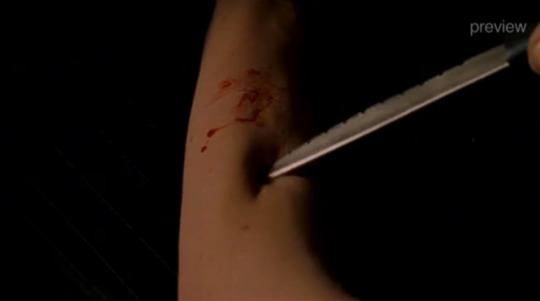
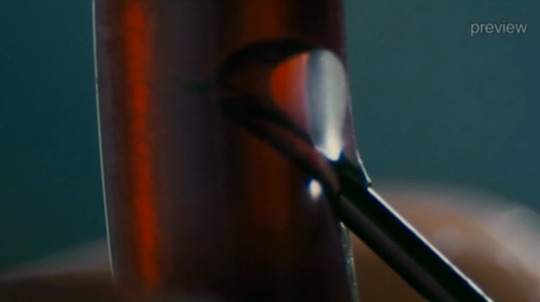



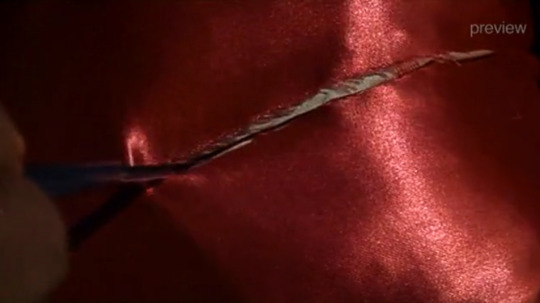


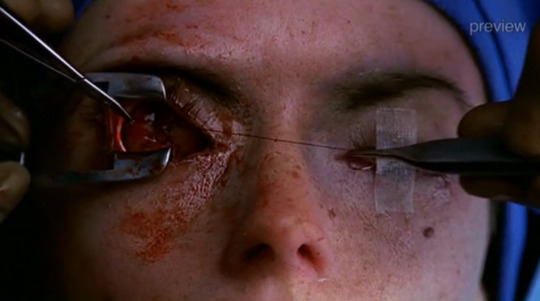
Cut (Christoph Girardet & Matthias Müller, 2013)
4 notes
·
View notes